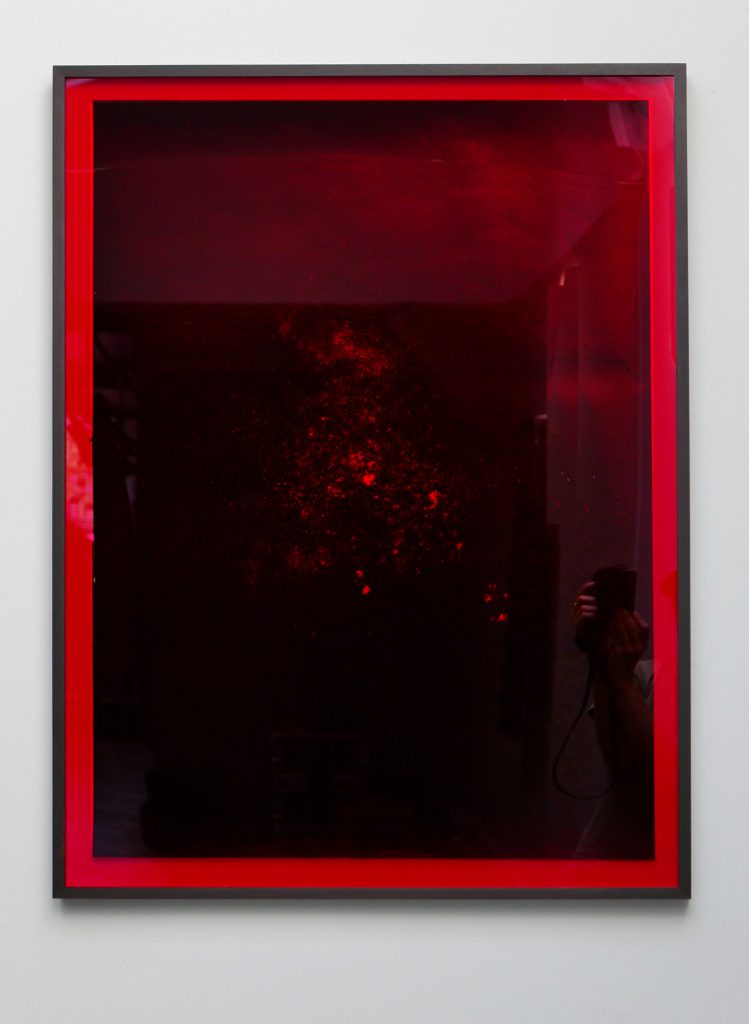|
Unfixed Galaxies, 2018 (framed) Unfixed analogue photographic prints (80×60cm), framed behind red glass. A photogram is developed but purposely left unfixed, so the print remains sensitive to light. By covering the print with red glass (red light doesn’t influence the photographic process), it is kept from dissolving into nothingness. Thanks to Aaplab and Mertensframes
|
